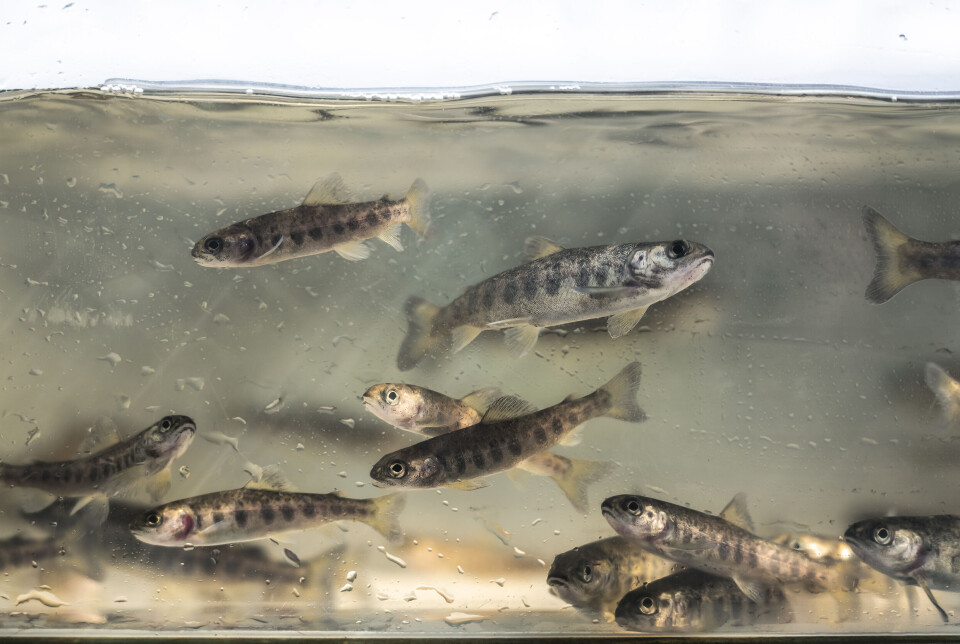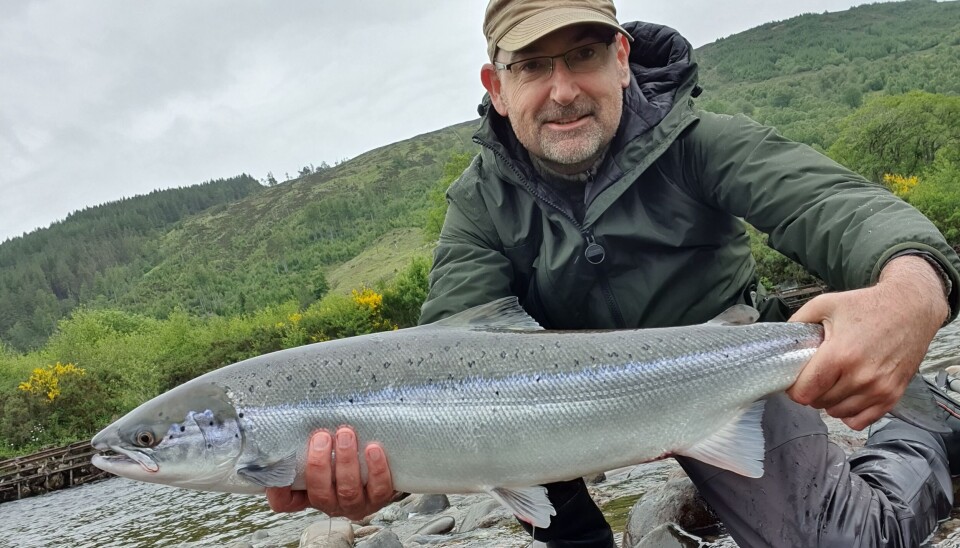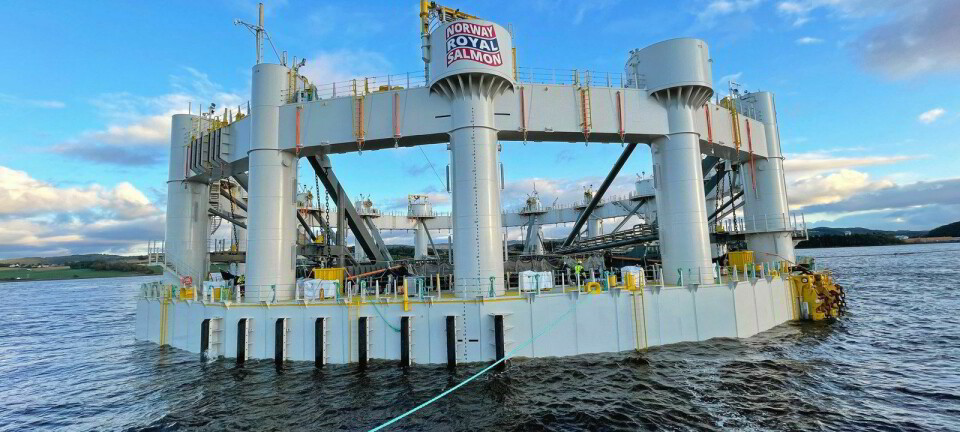
Fish farmers give £230,000 to continue wild salmon conservation
Scotland’s salmon farmers are investing in 10 projects nationwide to protect rivers, restore habitats, and safeguard wild salmon and sea trout.
More than £230,000 has been awarded this year through Salmon Scotland’s wild fisheries fund for practical work tackling long-term species decline. The fund is part of a £1.5 million commitment to conserve, restore, and sustainably manage wild fish populations across Scotland.
This year’s grants cover a mix of practical conservation, habitat restoration, and scientific research. The Loch Lomond Fisheries Trust will receive £30,625 for river bank improvements and tree planting on the River Fruin, while £17,541 will go towards erosion mitigation and spawning ground protection on the River Doon in Ayrshire.
Dam repairs
The Stornoway Angling Association on the Isle of Lewis has been awarded £25,000 for urgent repairs to a key dam on the River Creed. In Lochaber, £72,000 will support the Drimsallie Hatchery live salmon gene bank, and £11,600 will help the Lochaber Fishery Trust and the University of the Highlands and Islands in Inverness screen four rivers for juvenile salmon populations and genetic diversity.
Long-term monitoring continues at the Tournaig fish trap in Wester Ross with £8,485.
Other projects include research led by biologist Bob Kindness on the River Carron, with £10,000 to track how conservation stocking contributes to returning adult fish.
Habitat loss
Together, these initiatives are designed to tackle the long-term decline in wild salmon and sea trout populations. Numbers across the UK have been falling for decades, mainly due to habitat loss and warming rivers and seas. Survival at sea has dropped to between 1% and 5%, compared with around 25% 30 years ago.
Other pressures include invasive plants, predators such as birds, fish and seals, and obstacles to migration including dams and weirs.
Scotland’s salmon farming companies, which operate on the west coast, Orkney, and Shetland, set up the wild fisheries fund to help find practical solutions. Since 2021, the fund – previously called the ‘wild salmonid fund’ – has invested around £475,000 in projects, including a £35,000 grant to repair the Fincastle Dam in West Harris, safeguarding an important salmon fishery. The fund is co-ordinated by fishery manager Jon Gibb in Fort William, who has worked to build constructive links between farmed salmon producers and the wider fisheries and angling community.

Crucial funding
“This crucial funding gives rural and coastal communities vital support to protect wild salmon and sea trout," said Gibb.
“These 10 projects show how communities are taking practical action, from restoring habitats to gene bank research and long-term monitoring.
“It’s inspiring to see local groups, trusts and fisheries working together to safeguard these species and demonstrate how community-led conservation can make a real difference.”
Other projects awarded funding this year are:
- River Ruel habitat improvement, Argyll – £10,000 to the River Ruel Improvement Association, with support from Argyll Fisheries Trust, to reduce fine sediment entering the river and improve spawning and juvenile salmon habitat.
- Otter Ferry Seafish live salmon gene bank, Loch Fyne – £39,134 to continue the project rearing wild salmon parr to adulthood, supporting conservation and future restocking efforts.
- River Urr, Dumfries and Galloway – £9,547 to Urr District Salmon Fishery Board for invasive mink predator-trapping equipment and staff training, protecting native salmon and other wildlife such as voles, hedgehogs, and ground-nesting birds.
Restocking programme
Bob Kindness, a biologist on the River Carron since 1995, leads a long-term study tracking salmon stocking success. DNA analysis of juvenile salmon helps the River Carron Conservation Association see how stocked fish contribute to returning adults.
Kindness said: “The River Carron Conservation Association much appreciates funding from the Salmon Scotland wild fisheries fund. This support allows us to analyse tissue samples from salmon and monitor the success of a long-established stocking programme.
“So far, the results show that stocked salmon make a significant contribution to the adults returning to the river, helping sustain the population for future generations.”
Migration barriers
The Loch Lomond Fisheries Trust is using funding to improve habitat and remove migration barriers in Glen Fruin, part of a long-term effort to restore one of the catchment’s last healthy salmon rivers.
Jennifer Keeping, biologist at the Loch Lomond Fisheries Trust, said: “We’ve identified multiple barriers to salmon migration and areas where the river is exposed and prone to drought.
“The wild fisheries fund allows us to implement measures that make a real difference for successful spawning of salmon and trout. This autumn, we will begin tree planting and fencing to shade the waterways and improve the habitat for years to come.”
Safeguarding flow
The Stornoway Angling Association on Lewis carried out vital repairs to a holding dam on the River Creed, safeguarding water flow for salmon and sea trout migration and strengthening the structure for the years ahead.
Cameron Cranston, of the Stornoway Angling Association, said: “We’re very grateful to Salmon Scotland’s wild fisheries fund for supporting essential repairs to a key holding dam on the River Creed.
“The original dam was badly deteriorating and at risk of failing in high water. Thanks to the funding, we were able to carry out repairs during a dry spell, securing the structure for years to come and removing a major concern for the team.”
Meaningful action
Tavish Scott, chief executive of Salmon Scotland, said: “Scotland’s salmon farmers are committed to finding solutions, working constructively with the wild fish sector, and taking meaningful action to protect wild salmon and sea trout.
“Through the wild fisheries fund, we are supporting community-led projects that restore rivers, improve spawning grounds, and give wild salmon and sea trout a better chance of survival.
“Our members not only provide funding but also share expertise developed from
the successful farm-raised salmon sector, helping ensure that restoration and
conservation efforts are as effective as possible.”






















































